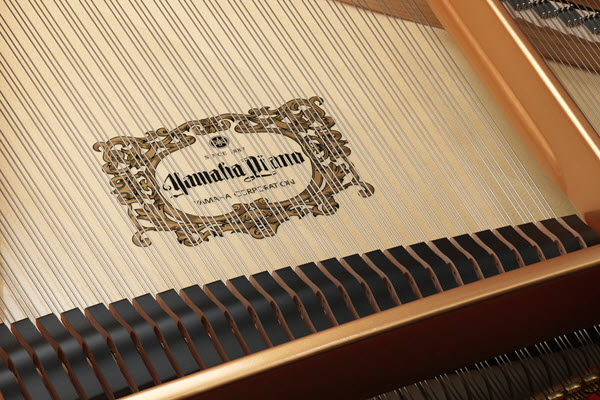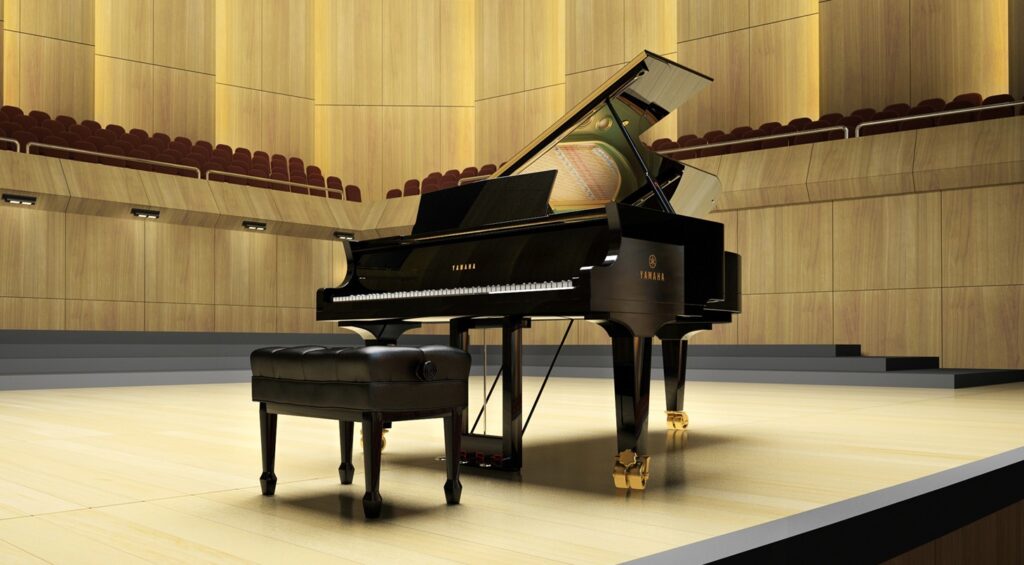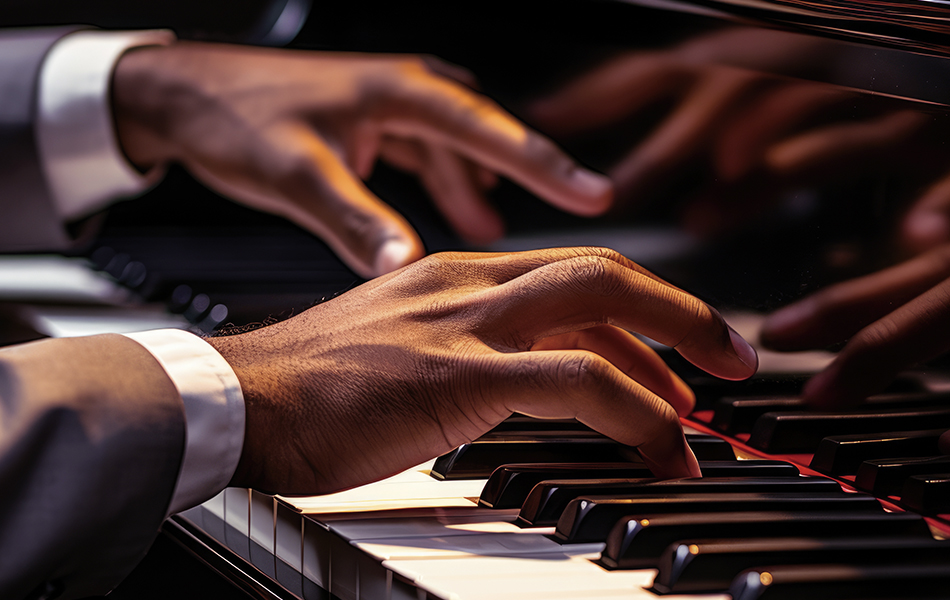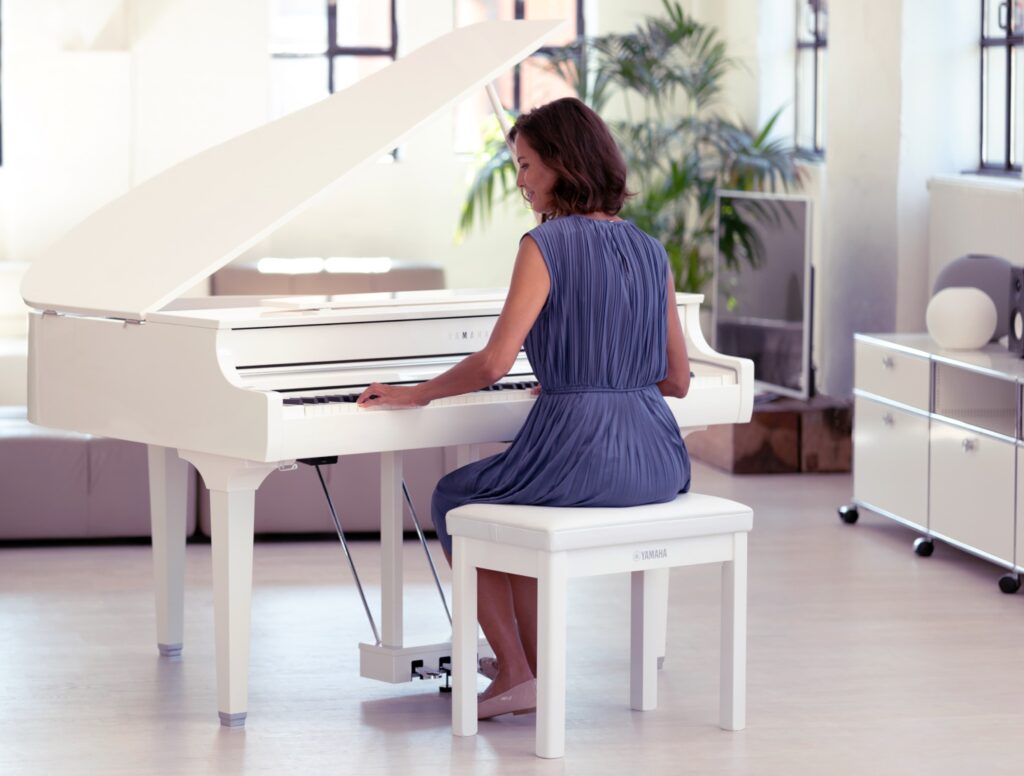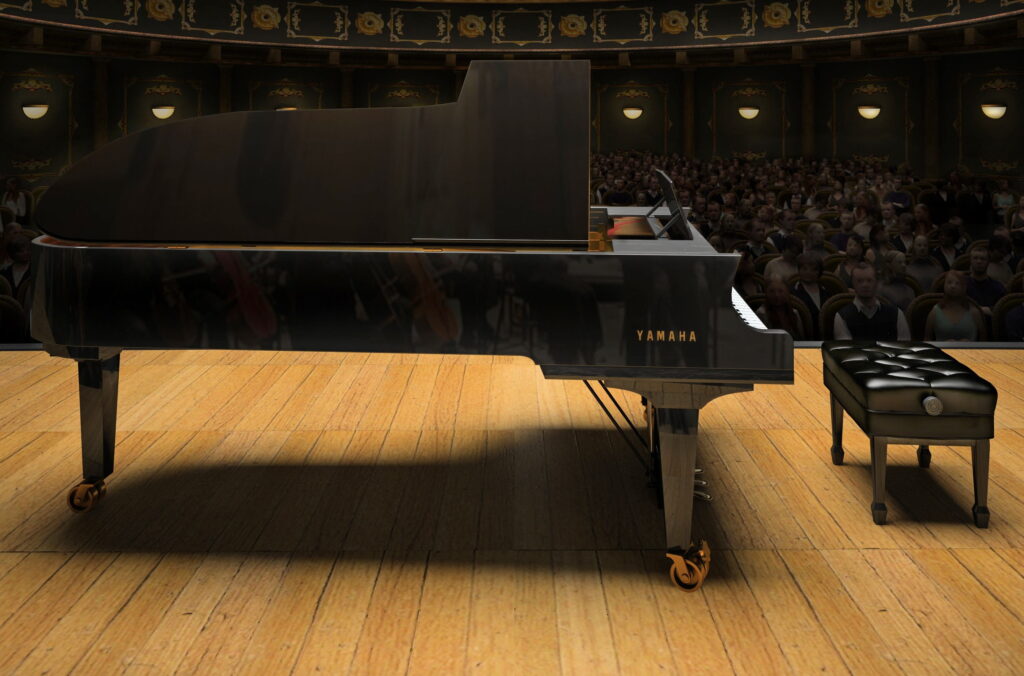How Does a Piano Work?
Here’s what’s going on under the hood.
Have you ever played an acoustic piano? If you haven’t had the opportunity, you owe it to yourself to try it sometime. The experience is completely different from playing a digital instrument, or even a small acoustic instrument like guitar, in that the sound hangs in the air all around you, filling the room if you play a key (particularly a low note) with force; however, the piano is equally capable of producing delicate, gentle sounds if you stroke the keys lightly. This is actually one of the main things that distinguishes the piano from its forebears like the harpsichord and clavichord; in fact, its very name (short for pianoforte — Italian for “soft/loud”) derived from that ability.
Yet the basic mechanism of the piano has hardly changed since its invention by Bartolomeo Cristofori in 1700: a series of keys that cause felt-covered hammers to strike steel strings tuned to a particular note, with the resulting vibration amplified by a soundboard — a massive wooden resonator designed to radiate a large volume of sound over a wide frequency range.
That, of course, is a highly simplified description of what’s really going on. In this article, we’ll take a deep dive into what occurs in the microseconds between the time you depress a piano key and the time you hear the sound.
It all begins with …
The Action
The mechanism that causes hammers to strike the strings when a key is pressed is referred to as the piano’s “action.” A piano key is simply a straight piece of wood that acts like a lever. When it’s moved downward (by virtue of being struck), it sets into motion a chain reaction whereby a complex series of physical components act to push the hammer toward the string.
Cristofori’s original design included an escapement mechanism that allowed the hammer to be “thrown” at the string. While this was an ingenious invention, it made it impossible for a pianist to repeat a note without fully releasing the key. This problem was solved by the double escapement system developed by Sébastien Erard in the early 1800s, which introduced a “repetition lever” — a component that caught the hammer and kept it suspended above the rest of the mechanism, so that the action could reset without the key being fully released. When playing a piano with a double escapement mechanism (which, in a more refined form, is employed by most modern grand pianos, including all Yamaha models), the same note can be played repeatedly up to 15 times per second!
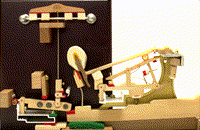
Here’s a TikTok video that shows how it all works:
@yamahamusic 88 keys to make infinite possibilities #musiciansoftiktok #musicians #YamahaMusic #pianotok ♬ original sound – Yamaha Music
The Dampers
With the exception of the very highest notes (which fade away quickly on their own due to the short length of their strings), each piano string has a damper resting on top of it. Without dampers, all the strings in a piano would vibrate sympathetically whenever any notes were being played … which would result in a messily reverberant sound. (This effect can be created by stepping on the piano’s damper pedal, described below, though in most cases it should be used sparingly.)
When a piano key is pressed, the damper is lifted off the associated string, allowing the string to vibrate and create a sound. As soon as your finger is lifted from the key, the damper drops back down, instantly stopping the string from vibrating and muting the sound. Dampers are the reason why you only hear sound coming from a piano when you depress keys.
The Pedals

There are three pedals on a piano, each designed to change the tone of the instrument in some way.
As mentioned in the previous section, the rightmost damper pedal (also called the sustain pedal) prolongs the sound of the piano by lifting all the dampers off all the strings, allowing them to vibrate freely.
On grand pianos, the sostenuto pedal in the middle acts as a selective damper, causing only those dampers that have already been raised (by virtue of their keys being depressed) to remain lifted; the dampers that are at rest remain unaffected. The end result is that those notes that were played prior to the pedal being activated continue to ring out even after you lift your fingers from the keys, while any new notes you add are not sustained.
Finally, the left-most una corda pedal alters the tone of a grand piano by shifting the entire keyboard and action slightly to the right so that the hammers may not strike all of the strings. This also has the effect of causing the hammers to strike the strings with a different, softer portion of the hammer head, further affecting the sound. An experienced pianist will use this pedal to elicit a wide variety of tonal qualities … and composers will use all of the pedals to create seemingly endless effects.
Note that in an upright piano, two of the pedals have different names and slightly different functionality; stepping on the left pedal (called the “soft” pedal) causes the hammers to be moved closer to the strings, thus slightly reducing the volume of the sound, while stepping on the middle pedal (called the “muffler” or “practice” pedal) causes a a thin piece of felt to be dropped between the hammers and strings, thus muting the sound. (The right “sustain” pedal works the same way as on a grand piano.)
The Strings
When struck by hammers, the strings in a piano vibrate to create sound. Whether a string plays a high or a low note depends on its length, mass and tension. The strings that play high notes are shorter and thinner, while the ones that play low notes are longer and thicker. The specifications for length, diameter, and tension of the strings is referred to as the piano’s “scale.” Coupled with other design aspects, this gives a piano its unique sound.
Even though a modern piano has 88 keys, there are actually more than 88 strings inside it; in fact, a typical piano may have as many as 230 strings. That’s because most of the high notes strike three strings at a time, while midrange and lower notes strike two; only the very lowest notes strike just a single string. The use of multiple strings for most notes is an integral part of the sound of a piano because no two (or three) strings can ever be tuned exactly the same, even when the tuning is done by a highly skilled professional. The very slight discrepancies between the two or three strings being struck act to broaden and enrich the sound.
The Soundboard
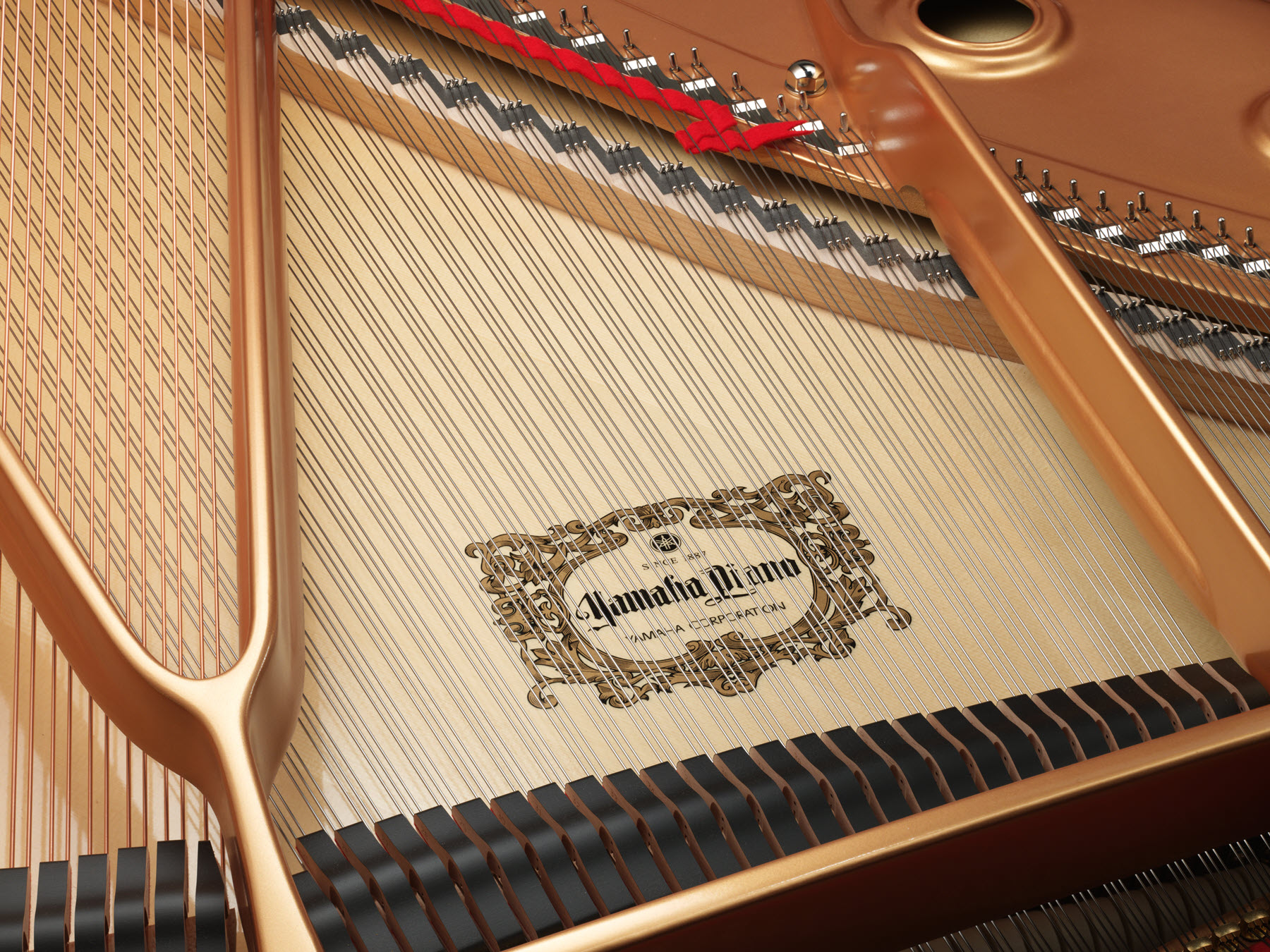
In many ways, the soundboard is the heart of the piano. It’s a thin wooden sheet (in Yamaha pianos, typically made from carefully selected Alaskan Sitka, Japanese spruce or Romanian spruce) that serves the important function of translating the energy of vibrating piano strings into a rich, resonant sound.
Piano soundboards are made from wood (as opposed to metal or some other material) because wood naturally amplifies lower-frequency sounds while simultaneously damping down higher frequencies. In other words, the soundboard serves to reinforce warm musical vibrations while at the same time reducing harsh unmusical ones. Quite a feat!
The Role of the Piano Technician
Piano technicians are trained to tune pianos and perform basic maintenance as well as diagnosing and fixing problems. Their skill can have a major impact on not just the playability but tonality of a piano — for example, if for some reason it cannot stay in tune.
“A well-trained and conscientious technician can actually help to lengthen the lifespan of a piano,” says David Durben, Piano Service Lead Specialist for Yamaha Corporation of America. “The person who will fill this function for you should be carefully chosen for his or her ability to perform the needed tuning and maintenance tasks, and should also be someone who can effectively communicate with you so they can meet your needs efficiently.”
Complex Construction = Complex Sound
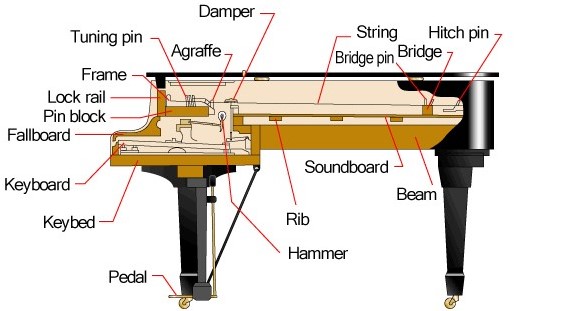
As you can see from the illustration above, a piano is a very complex instrument, constructed from thousands of components, with dozens of parts for each key alone! When quality materials are used in conjunction with expert craftsmanship, an acoustic piano offers a sound that is both unique and musically compelling. If you haven’t tried playing one, what are you waiting for?
Check out these related blog articles:
Here’s What to Look for When Shopping for an Acoustic Piano
What’s the Best Piano For Your Room?
What’s the Difference Between a Grand Piano and an Upright Piano?
Why Is a Piano Soundboard Made From Wood?
Why Aren’t There More Than 88 Keys on a Piano?
Click here for more information about Yamaha grand pianos.
Click here for more information about Yamaha upright pianos.
Click here to locate your local authorized Yamaha piano dealer.










